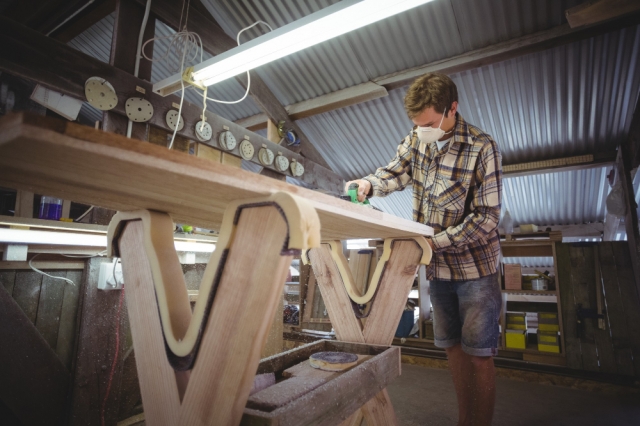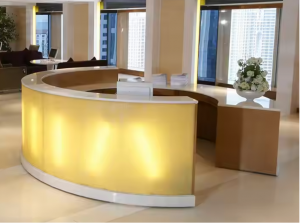Woodworking challenges even the most seasoned artisans due to its demand for meticulous attention to detail. The success of each project hinges on various factors, with lighting playing a pivotal role. This article explores the importance of lighting and how it enhances precision in woodworking tasks.
Exploring the Significance of Illumination
Lighting is integral to woodworking, far beyond mere visibility. Proper illumination is crucial for identifying fine details and ensuring accurate measurements and cuts. Without adequate lighting, skilled woodworkers might miss subtle nuances in the wood, which can lead to mistakes. Incorporating a woodturning light, for instance, can highlight intricate carvings and ensure that every curve and angle is perfect. Enhanced visibility improves the quality of work and contributes to a safer working environment.
Lighting Options for Workspaces
Choosing the proper lighting for a workshop can immensely impact productivity. There are several options, each with unique benefits. Fluorescent lights are excellent for large areas, as they provide broad coverage that illuminates the entire workspace uniformly. LED lights are favored for their energy efficiency and the bright, clear light they emit, which makes them ideal for tasks that require high precision. Halogen lights, while less energy-efficient, closely mimic natural sunlight and aid in accurate color representation and visibility of detail. Selecting appropriate woodworking lights ensures that every aspect of the process is visible and manageable.
Effectively Placing Lights
Once you choose the type of lighting, the next step is strategic placement. Distributing lights evenly throughout the workspace helps minimize shadows and reduce glare, which can distort the perception of the wood and tools. Balancing ambient lighting with task-specific lights that focus on particular work areas is essential. Adjustable lamps offer flexibility and allow woodworkers to direct light where needed most by ensuring consistent brightness across various projects. Proper placement of lights facilitates a smooth workflow and enhances overall precision.
Natural Sunlight is an Asset
Incorporating natural sunlight into a woodworking environment offers numerous benefits. Direct sunlight is invaluable for assessing wood colors accurately and reduces eye strain by providing a broad spectrum of light wavelengths. Installing windows or skylights in a workshop maximizes natural light usage, which creates a bright and inviting space. However, managing glare is crucial to prevent discomfort and ensure the light enhances rather than hinders the work. Blinds or curtains allow woodworkers to control the amount of sunlight, which maintains optimal lighting conditions throughout the day.
The Importance of Lighting for Ensuring Safety
Good lighting goes beyond improving accuracy; it is vital for workplace safety. In woodshops, where artisans frequently use machinery and tools, adequate lighting ensures that hazards are visible, thus reducing the risk of accidents. Proper illumination allows woodworkers to handle tools correctly and spot potential dangers before they cause harm. Well-lit workspaces promote a safer environment by enabling artisans to focus on tasks without worrying about unforeseen risks. Prioritizing lighting is essential for maintaining both safety and high-quality artistry.
Adjusting to Responsibilities
Different woodworking tasks require specific lighting setups to achieve the best results. Detailed carving, for example, demands intense illumination to highlight delicate features, which ensures that every cut is precise—conversely, sanding or finishing work benefits from softer lighting to avoid harsh shadows that can obscure fine details. Adapting the lighting to suit each task allows woodworkers to perform each step with clarity and control, thus leading to superior outcomes in every project.
Establishing a Cozy Atmosphere
Comfort significantly influences productivity in woodworking. Proper lighting can prevent eye strain and fatigue by enabling woodworkers to stay focused for extended periods without discomfort. Creating a pleasant lighting environment makes the workspace more inviting and enhances the overall woodworking experience. Adjusting the lighting to personal preferences boosts concentration and makes crafting more enjoyable and fulfilling, which creates a deeper connection to the work.
Assessing and Tuning Illumination
Regularly evaluating the lighting conditions in the workshop is essential to ensure they meet the evolving needs of different projects. As tasks change, so might the lighting requirements. Periodically adjusting the lighting setup—adding new lights, repositioning fixtures, or replacing bulbs—can enhance the workspace's functionality. By continuously assessing and fine-tuning the illumination, woodworkers can maintain an environment that supports precision and quality, which ensures that lighting remains an asset rather than a hindrance.
In Summary
Craftsmanship in woodworking demands precision, and proper lighting is a cornerstone. Woodworkers can enhance accuracy and safety by selecting suitable lighting types and strategically placing them for specific tasks. Opting for energy-efficient options and making the most of natural light supports sustainability and creates a comfortable and pleasant workspace. This combination of practical lighting strategies elevates the quality of work and enriches the overall woodworking experience. Each project becomes an opportunity to showcase skill, creativity, and meticulousness, all made possible through thoughtful illumination.






